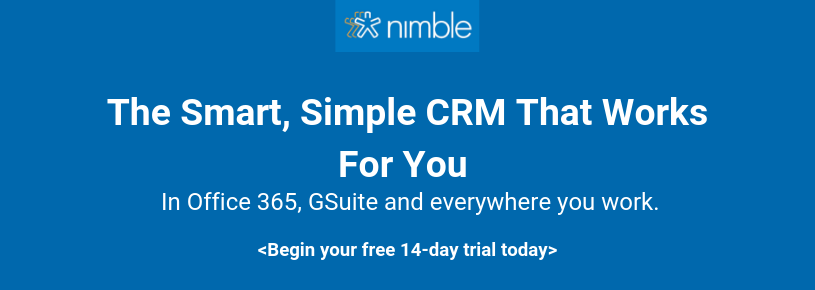At this current economic rate and the challenging market which is full of competition, it is an uphill task to grow a profitable business. As with other industries, the task is equally, or say, even more difficult, for SaaS businesses. That is caused by the operational model of this industry.
Most businesses make money when products or services are purchased. Contrarily, SaaS businesses rely on future revenue more than anything else.
The need for a solid SaaS marketing strategy is critical but most retaining customers is far more important. If customers aren’t happy, they will convert to the competition, which will mean a waste of money and resources.
To build a sustainable SaaS business, you need to keep clients happy, but how do you know if your customers are happy or not? Here are the six most important metrics for SaaS businesses.
Churn rate
The Churn Rate is the most important metric that SaaS businesses need to understand. It is a two-pronged metric that focuses on the customers and the revenue. The customer churn tallies the number of customers or accounts leaving the business’ service monthly. It is represented by a percentage of the overall number of customers using those SaaS services.
The other version of this metric is called the revenue churn, which measures the income that was made through customers leaving the SaaS service monthly. The revenue churn is also represented by a percentage, but of the overall revenue made by the business.
The latter is much preferred because it gives a clear indication of the current situation of the business. For example, small customers may churn the services of the business, but if the big customers remain, the company may continue doing well.
The Churn Rate isn’t that important for small businesses because they are the ones that would be crippled the most if they lost even a small percentage of customers. Small businesses with 100 customers wouldn’t suffer much with a churn rate of 3%, but if they are at 1 million, that would mean 30,000 clients were lost.
The worst part about churning rates is that they compound, which means that a 3% monthly churn rate will be 31% when that year ends. Retaining customers is very important and before you consider growing your business, work on retaining the clients you already have.
Monthly Recurring Revenue (MRR)/Annual Recurring Revenue (ARR)
The MRR/ARR is a great metric that makes the SaaS business model appealing. Calculating the revenue made through all customers in one month gives you the MRR, and to get the ARR, you multiply that number by 12. As long as you prevent customers from churning by offering services that add value, the revenue will remain the same.
To get positive rates on this metric, your pricing strategy should be on point. Avoid the trap of undervaluing the services you offer because the business won’t be sustainable as time goes on. To ensure that the business you’re running becomes self-sufficient in a short timeframe, price the services offered at an amount that is good enough to allow consistent company growth.
The MRR/ARR metric is easy to calculate manually, but if you like to automate this task, you can opt for online SaaS metric measuring tools. Bear in mind that the ARR is not a flat run rate, rather it’s constantly updated as there are more customers being added or if there are clients churning.
Lifetime Value (LTV)
In simple terms, the Lifetime Value is a metric that measures the total amount of revenue generated by a customer or account over their lifetime. The longer customers continue using that SaaS offer, the lifetime value will also increase.
To calculate the Lifetime Value of each account, you need to calculate the average revenue derived from all customers across all accounts.
After making that calculation multiply that average revenue per account (ARPA) with the number of months that customer has been using your SaaS offer. Alternatively, you can use the churn rate to substitute the ARPA; it will give you the same results.
Cost of Acquiring a Customer (CAC)
The Cost of Acquiring a Customer measured the money spent on marketing, sales and other costs incurred to acquire a customer. The CAC metric is calculated by adding all the costs, including salaries and other related expenses in a particular month. Afterward, you divide those expenses by the number of accounts acquired during that period.
The CAC metric is related to the Lifetime Value and it measured in comparison to determine the success of a SaaS business. For a SaaS business to be successful and economically viable, the LTV needs to be higher than the CAC.
The LTV shouldn’t be high and with only a small difference. Rather the difference should be significant. Generally, the rule of thumb here is that the LTV should be at least three times higher than the CAC. That rule of thumb ensures that the business stays operational in the long run and doesn’t face much financial trouble.
SaaS businesses often go wrong here by spending way too much on acquiring customers than they receive. Because of that, it takes them years to reach the break-even point when they reinvest the money they make from then on to the marketing of the business.
That often restricts the growth of startup companies and the cash-flow is pretty tight within the few years if operation. Essentially, it should take a business 12 months to recover the CAC and that speedy financial recovery will unlock the business’ potential.

Expansion Revenue
Expansion Revenue is a metric that shows the positivity of growth in the SaaS industry. If you don’t want your business to be swallowed whole by the churn rate, focusing on expansion revenue is the best option. Expansion Revenue focuses on MRR increase driven by the customers you already have, for example, if they upgrade to a more expensive plan.
Expansion Revenue is very beneficial because it can change a churn rate and make it negative. A negative churn rate is when expansions exceed the value of the churns you incur. For a business with 100 customers and loses 10, but the remaining ones expand and the revenue derived from them exceeds the 10% churn rate, it has a negative churn.
Generally, getting expansion revenue is far simpler than trying to get new customers. It is also cost-effective because it doesn’t require a large marketing budget but can work with minimal investment. Prioritizing expansion revenue over net-new acquisitions can have the best impact on your business’ growth.
If you have premium offers and have many customers using the basic entry-level version, encourage them to take up the premium offer. Reason with them on why they should take this step and don’t be a blatant salesperson, but engage with them in a way they would prefer.
Net Promoter Score (NPS)
The Net Promoter Score is a metric that measures the satisfaction of customers and is quite different from all the metrics listed above. All the metrics discussed here are related to the financial standing of the business, but this one is directly aimed at the experience of the users. It shows how much value you’re adding to customers with the service you’re selling and their feedback can be used to improve.
Measuring the NPS your SaaS has, is accomplished by surveying customers with a simple question: “How likely are you to recommend this service to a friend or colleague?”
A score of 1 to 10 will be the options you provide, with 1 being least likely and 10 being the most. If there are responses that are 6 and below, they should be followed up and directly asked what’s making them unhappy and what you can do to improve.
Although start-ups may have a hard time when trying to measure their NPS accurately, they can continually improve with the feedback they get from their customers. They can use this data to determine whether they have a product/market fit and whether they need to work on some points.
The bottom line
Running a SaaS business may not be as easy as it seems, but with the right tools and measuring metrics, you can run a successful business in this industry. Keep in mind that the LTV should be higher than the CAC is the most critical part when measuring your growth.
Another important thing to remember is that expansion revenue is easier and cheaper to acquire than getting new customers. Continually revisiting these metrics will help you run a successful business that will be profitable and self-sufficient within a short period. Don’t forget to conduct an NPS survey when the time is right to ensure that you are on the correct path.


